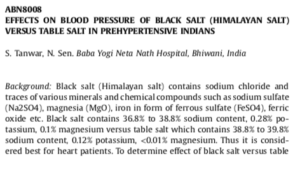Chapter 2. The Scientific Method in Nutrition
Finding Peer-Reviewed Articles
This Chapter is specific to the resources offered at Douglas College but similar resources should be available at your institution. Peer-Reviewed articles are found in specializes databases available at the Library webpage. You can navigate to ‘Articles and Databases’ and search by subject. You can navigate to the ‘Sciences’ tab and find the link to ScienceDirect. This database will offer journals related to Nutrition. Also available at Douglas College is SportDiscus, Medline, Google Scholar and Academic Search Complete. Once you select the database of your choice, you enter key words in the search bar much like you would with a traditional search engine. You can choose to refine your search by selecting ‘full text’, ‘review article’ or ‘research article’ if needed.
Let’s practice. Say you are instructed to research whether Himalayan salt is better for your health than regular table salt for regulating blood pressure. The search words you could enter is ‘himalayan salt’, ‘table salt’, ‘hypertension’, ‘black salt’ etc… If an article comes up that seems interesting, you can click on the link and read the abstract. The abstract is the first paragraph at the top of the article. It’s purpose is to summarize the article in a few hundred words or less. It should give you an idea of whether the article is suitable for your study.
Figure 2.4 Peer-reviewed article

Indian Heart JournalVolume 71, Supplement 1November 2019Pages s77-s78
Keep in mind that studies can either be reviews (a summary of several studies around the same topic) or research studies (original study looking at answering one research question with an experiment). The research studies only provide you with one new piece of information. This means you must read several studies in order to fully understand a concept or topic.
How do I know the article is peer-reviewed?
Typically, articles that can be found in the databases suggested are peer-reviewed. To confirm, find the date the article was accepted by the journal, reviewed, revised by the author and finally published. For example, “Received April 15th, 2019, Accepted August 29th, 2019. Published in Science on June 21st, 2020.” Other tips include looking at the lay-out. Does it include a title, list of authors and their affiliations and an abstract? Are there references listed or works cited throughout the article. For example, “Chocolate tastes delicious (Hamm et al, 2020).” Typically academic (or scholarly or peer-reviewed) work includes journal articles, monographs, books of edited readings, conference papers and theses. Non-academic work includes newspapers, magazines, newsletters, journals published weekly or more frequently, short articles (one or two pages) or articles with no list of references.

